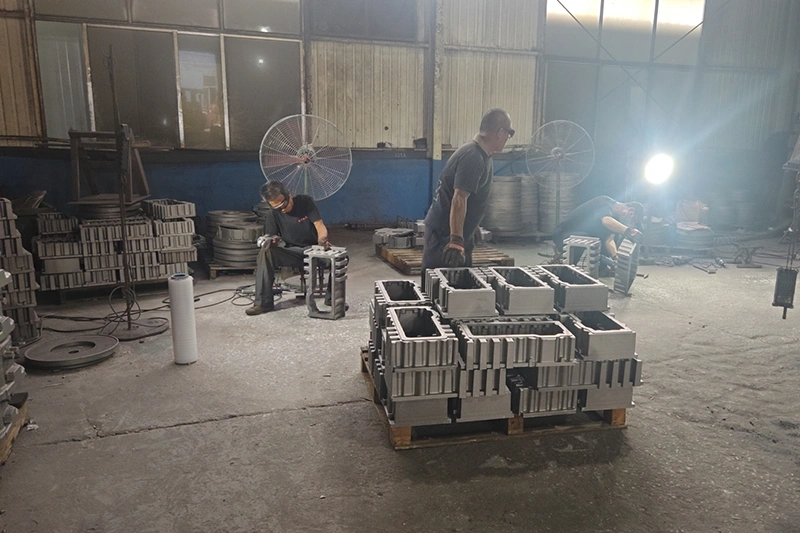The yield point is the exact stress level where aluminum permanently deforms instead of bouncing back to its original shape. Finding this point requires a tensile test and careful analysis of the stress-strain curve, since aluminum doesn’t show an obvious yield point like steel does.
Cut your aluminum sample into a standard dog-bone shape with precise dimensions according to ASTM E8 specifications. The narrow middle section (called the gauge length) should be about 2 inches long and perfectly smooth.
Clean the sample thoroughly with alcohol to remove any oils or debris. Even small surface imperfections can affect your results.
Mark the original gauge length with a punch or scribe. You’ll need these marks to measure how much the sample stretches during testing.
Install the aluminum sample vertically in the machine’s grips, making sure it’s perfectly aligned. Misalignment causes uneven stress and gives you incorrect results.
Attach an extensometer to measure the sample’s elongation precisely. This device clips onto the gauge marks you made earlier and tracks tiny changes in length.
Zero all measuring devices and set the loading rate to 0.005 inches per minute. This slow, steady rate ensures accurate data collection.
Start the machine and watch as it slowly pulls the aluminum sample apart. The computer records the force applied and how much the sample stretches.
Continue the test until the sample breaks completely. This gives you the full stress-strain curve, which you’ll analyze to find the yield point.
Save all data immediately after the test ends. You’ll need the complete force and elongation measurements for the next step.
Convert your raw data into stress (force divided by original area) and strain (change in length divided by original length). Most testing software does this automatically.
Plot stress on the vertical axis and strain on the horizontal axis. The resulting curve shows how the aluminum responds to increasing load.
Look for the initial straight portion of the curve. This linear region represents elastic deformation where the aluminum springs back if you release the load.
Draw a line parallel to the straight elastic portion of your curve, but offset it by 0.2% strain to the right. This is the standard method for aluminum since it doesn’t have a clear yield point.
Find where this offset line intersects your actual stress-strain curve. This intersection point is your yield strength value.
Read the stress value at this intersection point directly from your graph. This number is the yield strength of your aluminum sample, typically measured in pounds per square inch (psi) or megapascals (MPa).
Check that your yield strength falls within the expected range for your aluminum alloy. Pure aluminum yields around 7,000-11,000 psi, while alloys can range from 4,000 to 70,000 psi.
Repeat the test with at least two more samples from the same batch. Your results should vary by less than 5% if your technique is correct.
Calculate the average of your three tests. This average gives you the most reliable yield point value for your aluminum material.
Temperature affects aluminum’s yield point significantly. A sample tested at 200°F might yield at 20% lower stress than one tested at room temperature.
Different aluminum alloys have vastly different yield points. Always verify you’re testing the correct alloy and comparing your results to the right specifications.
Yield strength is where permanent deformation starts, while ultimate tensile strength is the maximum stress the material can handle before breaking. Ultimate strength is always higher than yield strength.
Aluminum transitions gradually from elastic to plastic deformation, unlike steel which shows a distinct drop in the stress-strain curve. The 0.2% offset creates a standardized way to define yielding.
No, you need proper equipment for accurate results. Hardness tests can estimate yield strength, but they’re much less reliable than actual tensile testing.
Heat treatment can double or triple aluminum’s yield strength. Solution heat treatment followed by aging creates precipitates that block dislocation movement, increasing the yield point significantly.
Calibrate your machine annually at minimum, or after testing 500 samples. More frequent calibration ensures your yield point measurements stay accurate.

